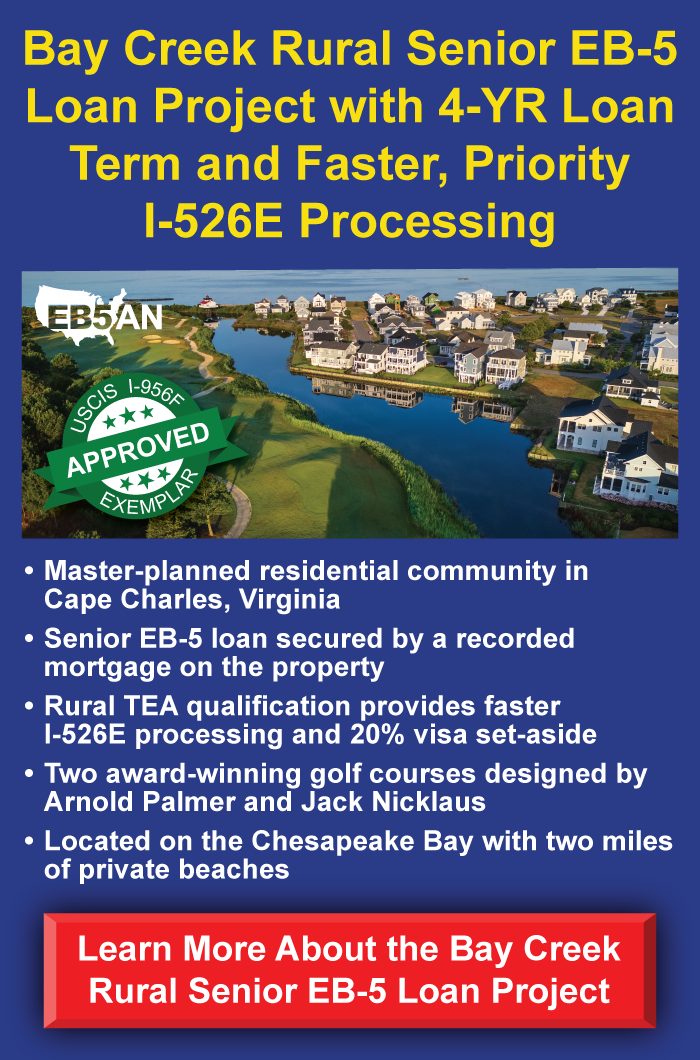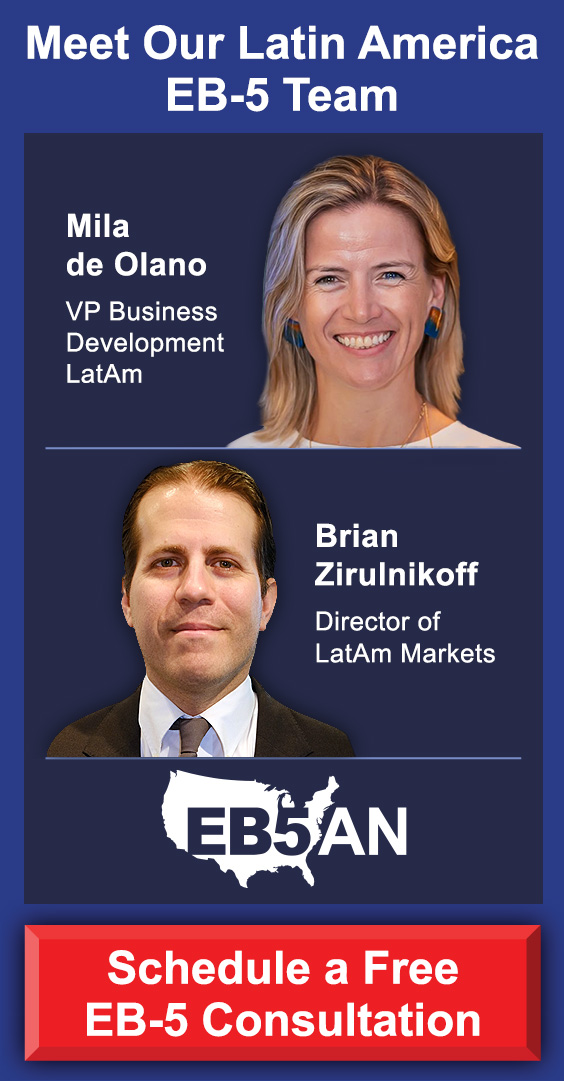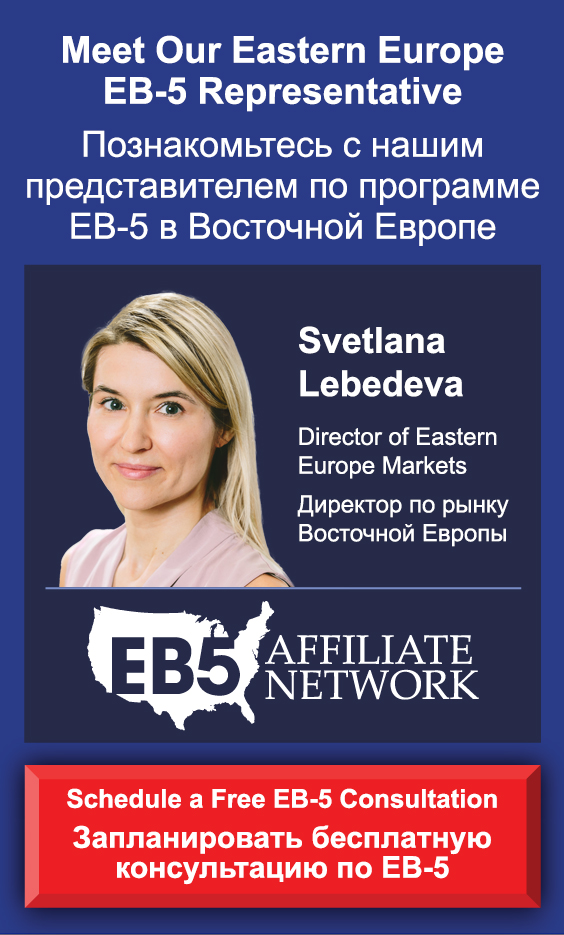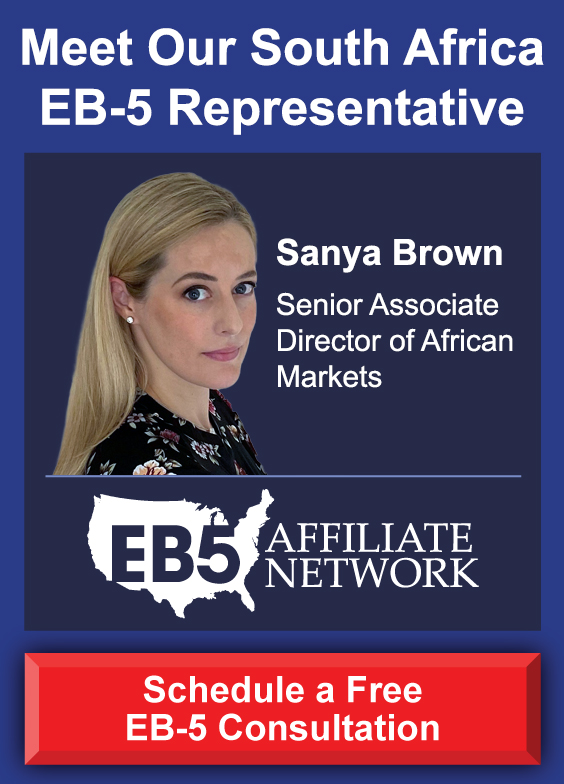I am Daria, a German citizen, and I live in Germany with most of my family. I trained and work as a lawyer.
Recently, my family and I started looking into options for relocating to the United States. We looked at many visas options, but all were either temporary or very uncertain.
I’m glad we discovered the EB-5 investor visa, which is perhaps the fastest way to become a permanent resident of the United States.
That’s why I decided to invest in EB5AN’s Twin Lakes rural project. In this blog post, you’ll discover my journey with the EB-5 program and my strategies for making a safe investment.
Like me, you could also receive I-526E approval in as little as 8 months by investing in a rural EB-5 project like Twin Lakes.
Watch Daria’s Full Interview
Watch Daria’s Interview Highlights
My Background and Family Goals
In 2022, our oldest child began college in the United States, and from that moment we visited the US often. We took trips to help her settle in and to see how she was doing in campus life. Each visit confirmed how much the US offers in education and opportunity. We saw the strong academic support systems and wide extracurricular options our child could enjoy. At the same time, planning frequent trips and renewing visas felt like an extra burden. We wanted a stable home in the US where our children could focus on their studies, not on paperwork. For the sake of our three children, all under 21, and for my husband and me, we decided that the EB-5 investment program offered the best route. It would allow our entire family to apply together and plan a future in the US without constant travel.
Weighing Different Visa Options
As we looked into visa options, EB-2 appeared to match my professional background. With my law degree, EB-2 could have been an option. However, the EB-2 category is heavily oversubscribed, which meant long waits and uncertain processing times. We worried that our plan would hinge on delays beyond our control. We also explored family-sponsored visas, but those would not cover all three children under a single petition. When we compared EB-5, we saw that one application covers the principal applicant, a spouse, and all children under 21. Though EB-5 requires a qualifying investment, it offered a clear timeline and certainty—qualities we valued over other paths. In the end, EB-5’s reliability and family coverage made it the right choice.
Choosing EB-5 & Goals
Once we settled on EB-5, we set clear goals. We aimed to find a regional center project that would meet USCIS requirements, create the necessary jobs, and process our I-526E petition quickly. We focused on sponsored projects that manage job creation so investors need only invest and let the center handle the rest. Our goal was to file the petition, receive approval, and move our family without undue delay. We looked for a project backed by an experienced developer with a record of on-time loan repayments. We also checked that the project would deploy our funds soon after subscription to meet USCIS rules on job creation. In short, our EB-5 plan revolved around speed, clarity, and full family coverage.
Finding an EB-5 Attorney
As a lawyer, I knew the value of good legal counsel. I interviewed about a handful of immigration attorneys from smaller law firms to bigger law firms balancing firm size with personal attention. I asked about success rates, turnaround times, and how they handle international clients. Ultimately, I chose Anahita George and her team at George & Marzialo. They had over a decade of EB-5 experience and a one-hundred-percent approval rate. From our first call, Anahita was pragmatic and straightforward, explaining complex rules in plain language. She and her team gave me confidence with clear action plans and open communication across our six-hour time difference. Their hands-on approach convinced me they would manage every detail of my I-526E petition.
I-526E Source-of-Funds Process
After we retained George & Marzialo, they set up a secure Dropbox folder for document exchange. Even though there’s a time difference of six hours, I couldn’t tell because they were super responsive. I uploaded five years of tax records, partnership agreements, bank statements, and proof of source of funds. The team provided a detailed checklist and file-naming guidelines. Whenever a document was missing or unclear, they flagged it and guided me on next steps. Translation of German legal and financial papers took extra days, but the full package was ready in about three and a half weeks. Their efficient workflow and clear communication meant I never second-guessed what was needed. By the time of filing, every document was labeled, organized, and ready for USCIS review.
Advice on Selecting an Immigration Attorney
Choosing your immigration attorney is one of the most important steps in the EB-5 process. You will work closely with them for months, so trust and ease of communication matter greatly. I recommend these steps:
- Talk to several firms. Don’t pick the first name you find.
- Ask for success rates and experience with source-of-funds cases from your country.
- Gauge their responsiveness. A quick initial reply often signals how they’ll handle later questions.
- Request a short video or phone call so you can assess their style and clarity.
- Check for a personal touch. A boutique firm can offer direct access to senior attorneys, while larger firms may delegate your case.
Listen to your gut. A lawyer who explains the process in simple terms and answers every question fully will ease your path through the EB-5 journey.
Researching Regional Centers
With legal counsel in place, I turned to regional centers. I reached out to EB5AN first because of their clear online materials and educational emails. Sam Silverman, their founder, responded almost immediately and set up a call within a day. Then I spoke with three or four other centers. While their staff was knowledgeable, I never got to speak with a principal, and some replies took days. EB5AN stood out because I spoke directly with leadership, received answers to my detailed questions about project timelines and job modeling, and got regular updates on industry news. Their transparency—posting expected job numbers, economic feasibility studies, and developer track records—gave me confidence. In my view, a regional center that keeps lines open with investors and shares key data online is worth its weight in gold.
Project Selection
After narrowing my choice to EB5AN, I compared their projects. I looked at:
- Location: Rural projects often receive faster I-526E approvals.
- Business model: Proven models like senior living have steady demand.
- Job creation: I checked how many jobs the project would create per dollar invested.
- Developer strength: A track record of on-time performance is critical.
- Build flexibility: Phased developments allow adjustments if the economy slows.
I reviewed feasibility studies and third-party market reports. I matched project projections against USCIS rules to be certain the numbers would satisfy job-creation requirements. This careful, data-driven analysis let me choose with confidence rather than guesswork.
Choosing Twin Lakes & Kolter
I decided on the Twin Lakes Georgia project, backed by Kolter, a developer with over 25 years of experience and no missed loan repayments. Kolter offers a loan-repayment guarantee on EB-5 investments, which reduces risk by promising to return the principal under certain conditions. Twin Lakes focuses on a senior living community—an established market even if the broader economy dips. Homes will be built in phases, meeting job targets early and allowing adjustments if needed. Funds are deployed soon after subscription, supporting USCIS requirements on timing. For a rural project, this strong developer track record and built-in guarantee made Twin Lakes the clear choice for my family’s EB-5 investment.
Onboarding and Funding
Once I chose Twin Lakes, the onboarding process was remarkably quick. In early July, my attorney sent the subscription agreement, escrow paperwork, and wiring instructions. I signed every document, had them notarized where required, and wired the $800,000 investment by the end of July. My lawyer coordinated with EB5AN’s team to track the transfer. Within 48 hours I received the escrow bank’s confirmation letter. At each step, both teams answered my questions by email or phone. There were no delays or missing details. From the time I started gathering signatures to final confirmation, the entire funding process took less than two weeks. That efficiency reinforced my trust in both my legal counsel and the regional center.
Receiving I-526E Approval—In Only 8 Months!
I filed my I-526E petition on August 1, and USCIS received it that same day. On April 2, 8 months and one day later, I opened the mail to find an approval notice. That timeline was even faster than I dared hope. It showed me the impact of a well-prepared petition combined with a strong project sponsor.
In a short time, my family and I will be enjoying our U.S. Green Cards.
In summary, my advice for EB-5 investors is simple:
- Start early. Don’t wait for rule changes or backlog shifts.
- Choose your attorney wisely. Look for clear communication, proven success, and personal attention.
- Speak with regional center principals. Their transparency and responsiveness matter.
- Study project details. Verify developer track record, job-creation plans, and risk-mitigation features like repayment guarantees.
By following these steps, you can give your family the best chance to live and work in the US on a stable, well-documented path.







